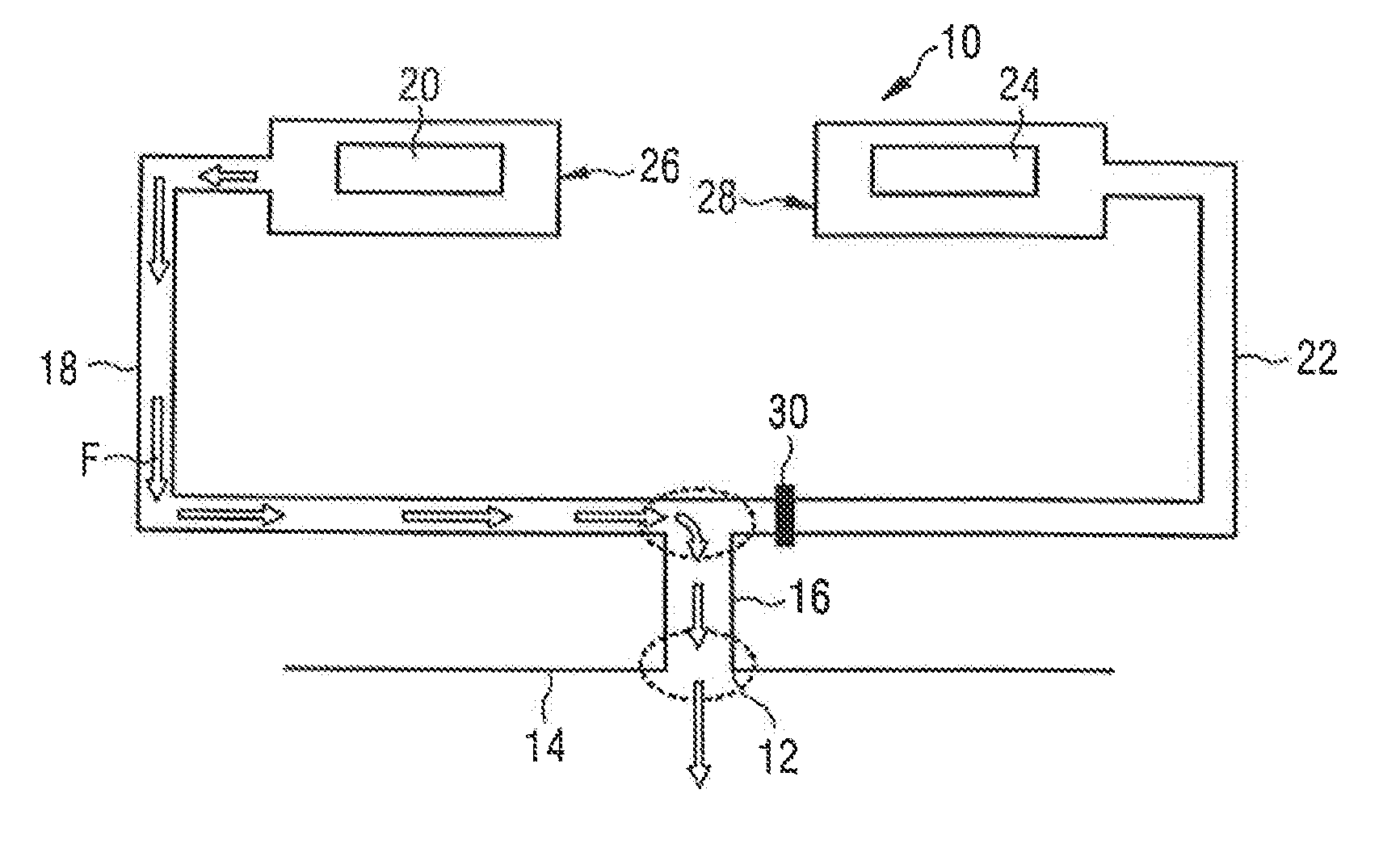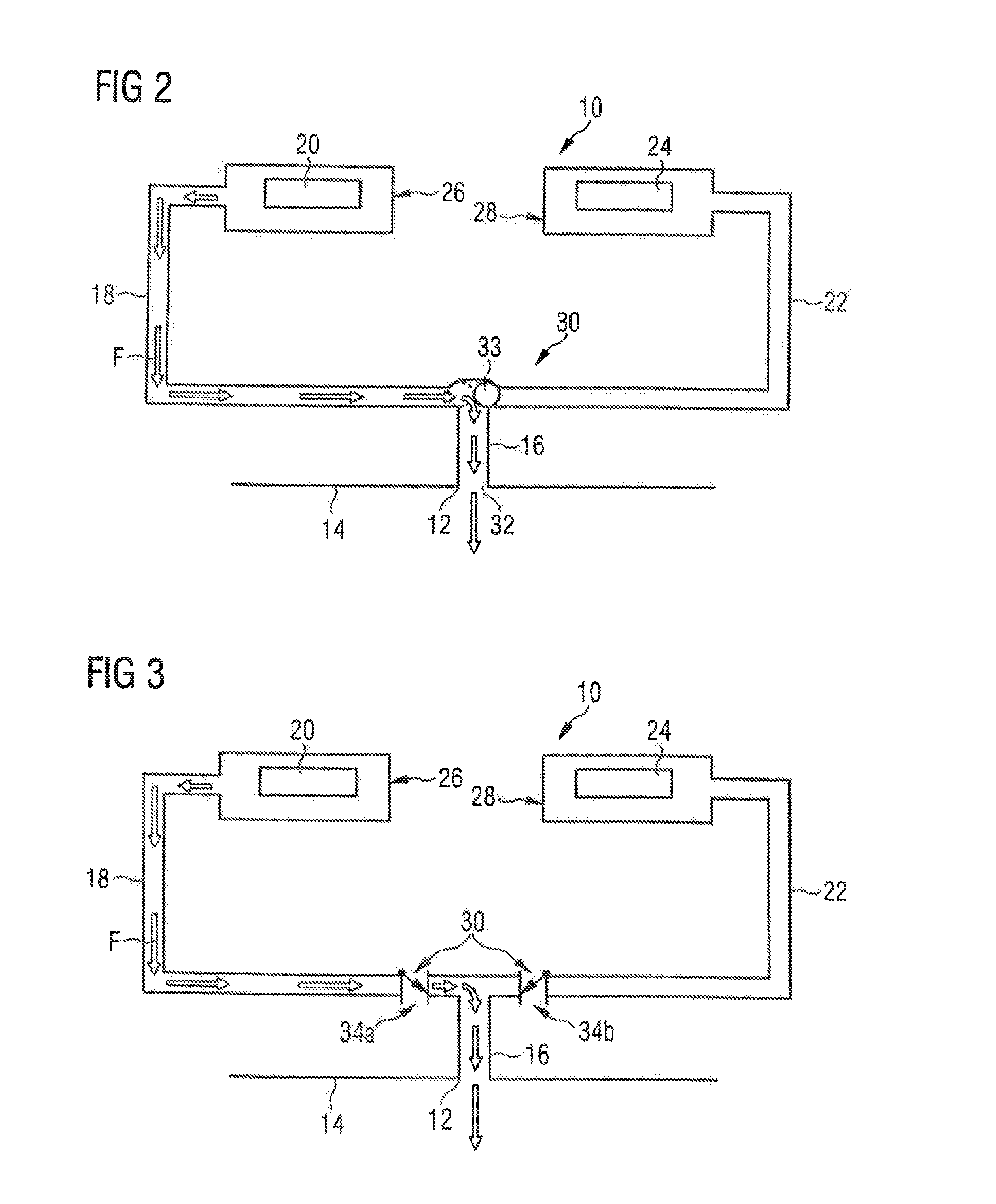Aircraft battery exhaust system
- Summary
- Abstract
- Description
- Claims
- Application Information
AI Technical Summary
Benefits of technology
Problems solved by technology
Method used
Image
Examples
second embodiment
[0036]In an aircraft battery exhaust system 10 shown in FIG. 2, the separation device 30 comprises a multiple non-return valve 33, i.e., a double non-return valve which is disposed at an intersection point of the fluid discharge line 16, the first fluid discharge branch line 18 and the second fluid discharge branch line 22. As shown in FIG. 2, fluid leaking from the first battery 20 reliably is prevented from entering the second fluid discharge branch line 22, but is discharged from the aircraft via the fluid discharge line 16 and the fluid discharge opening 12. In case of a failure of the second battery 24, the double non-return valve 33, in the position indicated in dotted lines in FIG. 2 allows the discharge of fluid leaking from the second battery 24 from the aircraft via the second fluid discharge branch line 22, the fluid discharged line 16 and the fluid discharge opening 12, but prevents the fluid leaking from the second battery 24 from entering the first fluid discharge bran...
third embodiment
[0038]FIG. 3 shows an aircraft battery exhaust system 10 which differs from the arrangement according to FIG. 2 in that the separation device 30 now no longer comprises a double non-return valve, but instead comprises two non-return valves 34a, 34b. One non-return valve 34a, 34b is disposed in each of the first and the second fluid discharge branch line 18, 22. As shown in FIG. 3, in the event of a failure of the first battery 20, a fluid leaking from the first battery 20 exits the aircraft via the first fluid discharge branch line 18, the fluid discharge line 16 and the fluid discharge opening 12, wherein the non-return valve 34b disposed in the second fluid discharge branch line 22 prevents the fluid from entering the second fluid discharge branch line 22. The second battery 24 thus is reliably protected.
[0039]Similarly, in the event of a failure of the second battery 24, fluid leaking from the second battery 24 can be discharged from the aircraft via the second fluid discharge br...
PUM
 Login to View More
Login to View More Abstract
Description
Claims
Application Information
 Login to View More
Login to View More - R&D
- Intellectual Property
- Life Sciences
- Materials
- Tech Scout
- Unparalleled Data Quality
- Higher Quality Content
- 60% Fewer Hallucinations
Browse by: Latest US Patents, China's latest patents, Technical Efficacy Thesaurus, Application Domain, Technology Topic, Popular Technical Reports.
© 2025 PatSnap. All rights reserved.Legal|Privacy policy|Modern Slavery Act Transparency Statement|Sitemap|About US| Contact US: help@patsnap.com



